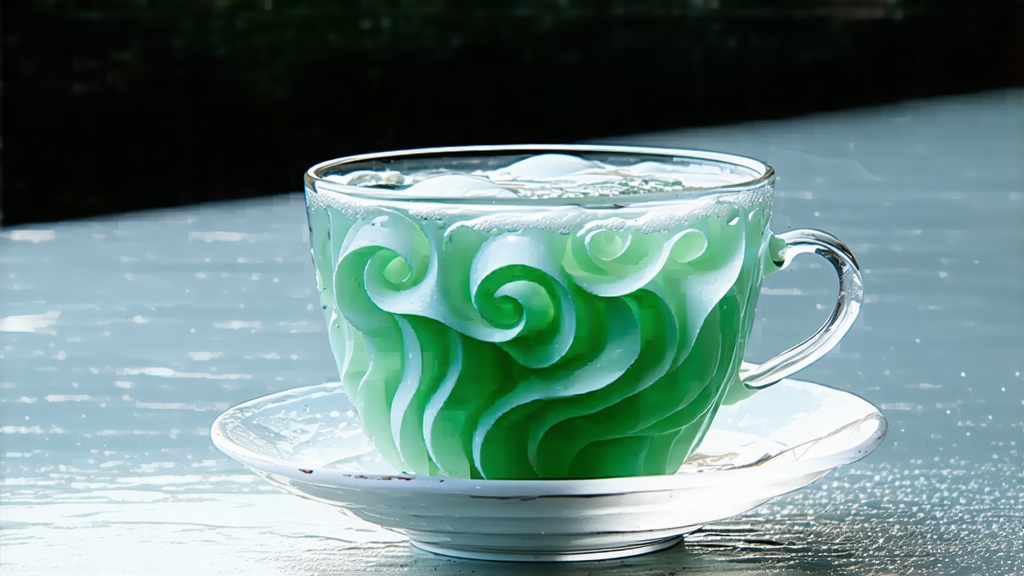
Among the emerald spectrum of Chinese green teas, none embodies the romance of early spring quite like Biluochun. Its name, literally “Green Snail of Spring,” hints at the tea’s appearance—tight, spiral-shaped pellets that resemble tiny jade snails—and at the season when the first buds are plucked, just as the mist still clings to the shores of Taihu Lake in Jiangsu Province. To international drinkers accustomed to the flat blades of Longjing or the needle elegance of Huangshan Maofeng, Biluochun offers a different visual and aromatic drama: downy silver tips that unfurl in hot water, releasing an unexpected bouquet of apricot, orchid and faint seawater minerality. This essay invites you to travel from the Tang-dynasty gardens of Suzhou to the microscopic hairs on a freshly picked leaf, learning how subtle changes in withering temperature or a five-second extension in the first infusion can swing the cup from honeyed delicacy to grassy astringency.
Historical roots and imperial fame
Biluochun’s documented history begins in the late Tang (ninth century), when tea poets such as Lu Tong praised the “fragrant curls from Dongting mountain.” Originally the tea was called “Xia Sha Ren Xiang”—“Scary Fragrance”—because gardeners noticed that the mere act of bruising the leaves released an intoxicating perfume that startled even experienced tea masters. The Qing emperor Kangxi, touring the region in 1699, was presented with the tea during a boat excursion on Taihu. Struck by its jade color and spiral form, he renamed it Biluochun, combining “bi” (green jade), “luo” (spiral shell) and “chun” (spring). From that moment the tea joined the imperial tribute list; 300 grams were reserved exclusively for the palace, while lesser grades entered the canals of Suzhou and the Grand Canal trade network, eventually reaching European ports via the Canton System in the eighteenth century.
Micro-terroir: two mountains in a lake
Authentic Biluochun comes from only two peaks that rise from Taihu Lake: Dongting Dongshan (East Mountain) and Dongting Xishan (West Mountain). The lake’s 2,300 km² surface acts as a giant heat reservoir, moderating night temperatures and bathing the tea gardens in reflective light. Thin mist forms almost every dawn, filtering sunlight and encouraging slow amino-acid accumulation, especially L-theanine, which translates into the tea’s hallmark sweetness. Soils are acidic granitic loam, rich in quartz and iron; drainage is so rapid that roots are forced to dive deep, pulling up trace minerals that tighten the leaf structure and allow the tight rolling for which Biluochun is famous. Within these two mountains, micro-plots enjoy nicknames—“Bird’s Beak,” “Turtle’s Back,” “Old Dragon Hollow”—and command prices that rival first-growth Bordeaux.
Cultivars and picking grades
Although the classic cultivar is the small-leaf “Dongting Qunti,” clonal selections such as “Dongkeng 1” and “Fuding Dabaicha” have been introduced to extend the season and increase downiness. Picking begins when 5 % of the buds reach “one bud with one half-expanded leaf,” usually between the Qingming and Grain Rain solar terms (early April). The top grade, “Special Supreme,” demands 60,000 buds per 500 g; the pluckers work barefoot on the terraced slopes so as not to bruise the leaf on leather shoes, and each basket is lined with fresh fig leaves to prevent oxidation during the downhill walk. Second grade, “First Grade,” allows one bud and one fully opened leaf, while “Second Grade” permits two leaves. International buyers will notice that only the Special Supreme carries the silvery-white pubescence that sparkles under light like frost on moss.
Crafting the spiral: a six-hour choreography
Once the buds reach the village workshop, they undergo the most intricate hand-processing sequence in all green tea manufacture. Withering is done not on bamboo trays but on a single layer of rough hemp cloth stretched over a mild charcoal brazier at 35 °C for 30 minutes; this drives away surface moisture while locking in the aromatic precursors. Next comes “shaqing” (kill-green) in a wok heated to 180 °C. The master uses only the heel of his palm to press the leaves against the